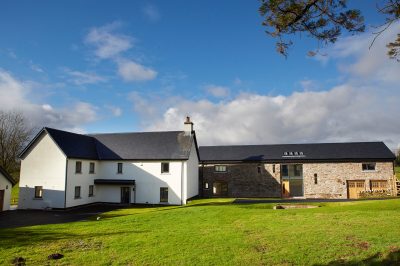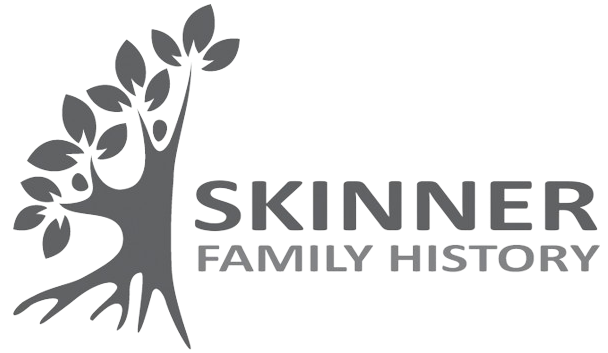Draenllwyn Farm Christchurch
From Dairy Farm To Luxury Retreat
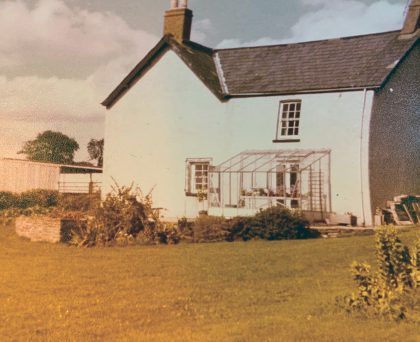
Nestled along the Old Roman Road in Christchurch, Monmouthshire, Draenllwyn Farm, meaning the thorn bush, has stood as a witness to centuries of history. From its origins in the Manor of Coldra to its evolution into a successful dairy farm and, ultimately, a modern luxury retreat, its story is one of perseverance, transformation, and deep familial ties.
Our journey with Draenllwyn began in 2023 when we discovered that our Great-Granduncle and Aunt, George and Maud Watkins, had called the farm home for 70 years. Then, in 2025, we were contacted by Jo, a member of the Haines family, whose grandparents had previously owned Draenllwyn. Collaborating with Jo, we pieced together a timeline of the farm’s history, which has also been known as Dranllwyn, Draen Llwyn and Draen-Llwyn.
Early History
In 1133, the Manor of Coldra was established and granted by Robert de Chandos, the Norman Lord of Caerleon, to his newly founded Goldcliff Priory. Encompassing much of the land in the northeastern corner of Christchurch, the manor included the area where the farms of Draenllwyn and Little Bulmore would later be established. For centuries, the Manor of Coldra played a vital role in agricultural life, shaping the livelihoods of those who worked its fields. Remaining largely intact for over 800 years, the estate was eventually dissolved in 1946.
While the exact date of Draenllwyn’s construction remains unknown, further details are found in A History of Monmouthshire by Joseph Alfred Bradney. According to this source, Draenllwyn Farm was part of the Manor of Coldra and, at the time of his death in 1748, was owned by Henry Harris of Wilcrick, near Magor. Three years later, at a manor court, his heir, James Harris, transferred the farm’s use to William Williams, a gentleman and steward of Coldra Manor. The property later came into the possession of James Thomas of St. Albans, a manor house situated close to Draenllwyn.
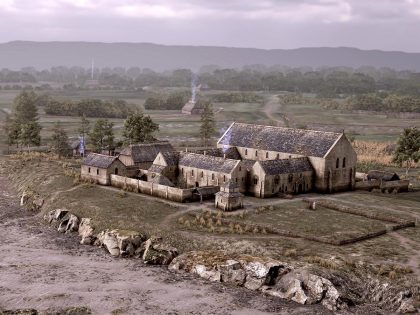
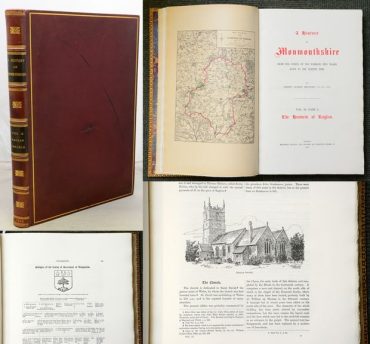
19th Century Draenllwyn
The next recorded reference to Draenllwyn appears in the proceedings of a court baron held on May 30th 1817. A court baron was a medieval English manorial court responsible for resolving disputes between tenants and the lord of the manor. At this session, William Edwards of Christchurch, grandson and heir of the previously mentioned William Williams, was granted tenancy of property and land in Caerleon and Christchurch. Among these holdings were the cottages at Draenllwyn and nearby Cockshoot. As was customary, William Edwards was required to pay a fine to the Lord of the Manor, equivalent to two years’ rack rent – the maximum rental value of the property. This practice was a long-standing tradition in the manor.
The next tenants we discovered were William and Mary Jones. They were dairy farmers who resided at Draenllwyn in the 1870s and 1880s. Mary passed away at the farm in 1881 and was laid to rest at St. Mellons Parish Church. Records from 1883 confirm that William remained as the tenant of both the land and the house, but his time at Draenllwyn ended with his passing in 1888.
A Famous Name at Draenllwyn
Following William Jones, the farm came under the management of Christopher George Firbank, son of the esteemed industrialist Robert Firbank, who had served as High Sheriff of Monmouthshire in 1885. Raised in a wealthy household at 14 Clarence Place, Newport, Christopher described himself as a “gentleman farmer” and first appeared on the Draenllwyn Electoral Register in 1889. The 1891 Census recorded him living at the farm and overseeing operations. Also living at farm was his Coachman and a young servant.
His tenure, however, was short-lived. In January 1892, Christopher auctioned off all his farm stock – 64 ewes, 42 head of cattle, 17 horses, and 28 pigs. Though he continued residing at Draenllwyn until 1895, his time there ended abruptly with his passing in 1896 at the age of 30, leaving behind a considerable fortune.
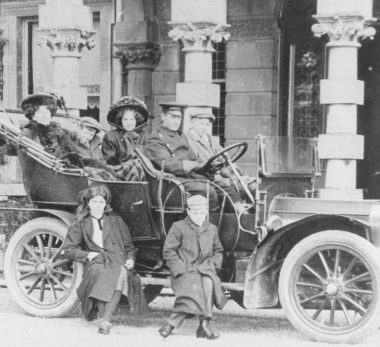
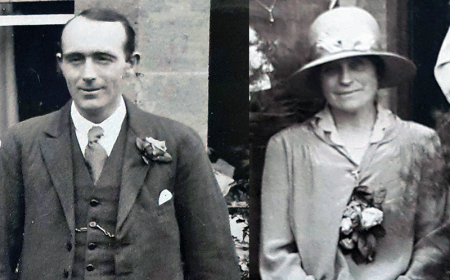
A New Beginning: The Watkins Family (1898–1970)
Draenllwyn found new life in 1898 when George Watkins, a farmers son from Nash, took over the farmhouse and land. The following year, he married Rose Winifred Maud Waters, known as Maud, at St. Mary’s Church in Nash. Maud was from a prominent farming family and together, they built a home and dairy business at Draenllwyn, which featured a substantial five-bedroom farmhouse, providing ample space to grow their family.
Their only son, Joseph Arthur Godfrey Watkins, was born at the farm in 1900, and census records from 1901, 1911, and 1921 show George, Maud, and Arthur lving at Draenllwyn alongside several farm workers. George’s sisters, Eliza and Myra also spent time living with the family. In 1928, Arthur married Frances Evans, and the young couple joined George and Maud at the farm. Their children, Winifred (born 1929) and Phillip (born 1932), marked another generation’s deep-rooted connection to Draenllwyn. By 1939, the farm must have been a bustling place.
A Changing Landscape (1940s–1950s)
The 1940s brought significant changes for the family. Arthur and Frances left Draenllwyn and moved to Portskewett, where they continued farming at Aust Farm, a modern farm on Black Rock Road. In 1942, at the age of 72, George retired and auctioned off his livestock and farming equipment. The sale, held on April 14th at the auction offices in Newport, included 21 head of cattle and 48 ewes. During World War II, George and Maud were not alone at the farm, as their nephew, Ray Skinner, came to live with them.
Greater upheaval came in 1946 with the dissolution of the Coldra Estate. Draenllwyn Farm was split into two lots: the land and farm buildings were purchased by Edgar and Iris Haines of Abernant Farm who resumed farming at Draenllwyn, while George and Maud remained in the farmhouse as tenants of Lydia Beynon.
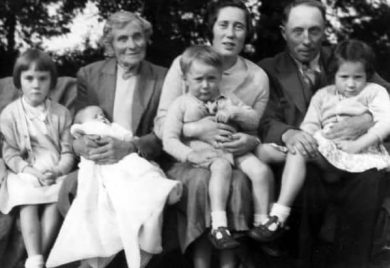

New Owners, New Purpose (1970–1990s)
George passed away in 1954 at the age of 85, he was the last of the nine Watkins siblings born at Pye Corner Farm in Nash. His funeral was held at Holy Trinity Church in Christchurch. Maud remained at Draenllwyn until her passing in 1970 at the age of 94. Her funeral was a tribute to her lasting legacy, attended by many local farming families, including members of the Haines, Skinner, and Waters families.
Later that year, Draenllwyn farmhouse and its ¾ acre of land were put up for auction by the trustees of the late Lord Beynon. Described as a “pleasant country residence situated in an elevated rural setting,” the property was sold at the Westgate Hotel in Newport on November 3rd 1970. The farmhouse featured five bedrooms, a lounge, a dining room, a kitchen, and a breakfast room.
Trevor Haines purchased the farmhouse at auction. His parents Edgar and Iris already owned Draenllwyn’s farmland and lived opposite the farm. Trevor had been born at Abernant Farm and was steeped in farming tradition. In the following years, Trevor let the farmhouse to Dorothy Tudor Boshier-Jones, a widow who had previously lived at The Bullmore. She spent her final years at Draenllwyn, passing away in 1982 and leaving bequests to those who had been kind to her in later life.
In the 1980s, now married with children, Trevor Haines moved his family into the farmhouse at Draenllwyn, restoring it as a family home. During this time, the land also found an additional purpose, serving as a venue for riding sessions for people with disabilities. In 1991, a new chapter began when Draenllwyn’s land and farmhouse were sold by the Haines family to the Celtic Manor Resort.
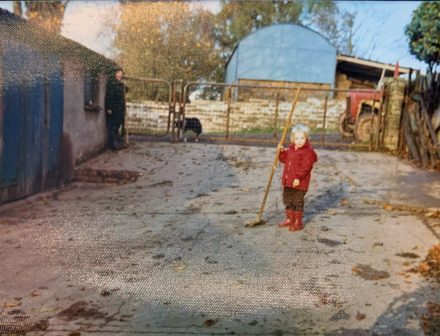
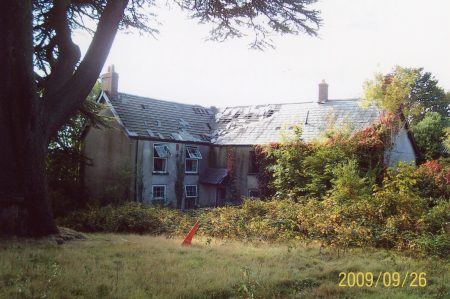
The Rise of Celtic Manor (1990s–Present)
Construction of the Roman Road Golf Course – named after the ancient Via Julia Roman highway – began in 1992 and was completed in 1995. Designed by Robert Trent Jones Sr., it became the first of several world-class courses at the resort. Notably, the Haines family retained a small field, as Iris Haines declined an offer from Terry Matthews, saying “why would I want to sell it?“. In 2010, The Celtic Manor sought permission to relocate the ruins of Little Bulmore farmhouse to Draenllwyn, intending to reconstruct it brick by brick ahead of the Ryder Cup. However, due to its listed status, the request was denied, preserving the ruins in their original location.
In the 2010s, Draenllwyn farmhouse underwent redevelopment, emerging as luxury holiday accommodation within the Celtic Manor empire. It is now known as the Farmhouse and Barn and is described by the Celtic Manor as “spacious, stylish and spectacularly luxurious, an immaculately renovated Welsh farmhouse“. What was once a hardworking family home had been transformed into a high-end retreat. It looks impressive, but we do wonder if George and Maud would even recognise the place!
A Legacy of Change and Continuity
From its medieval roots in the Manor of Coldra to its days as a thriving family farm and its eventual transformation into a luxury resort, Draenllwyn Farm has continuously evolved. Yet, through all its changes, the land remains a place of significance, shaping the lives of those who have called it home. Whether through agriculture or world-class golf, Draenllwyn endures as a site of gathering, industry, and memory – its legacy firmly woven into the fabric of Newport’s agricultural past.
Something to add to the story of Draenllwyn Farm? Please email us: research@skinnerfamilyhistory.com
